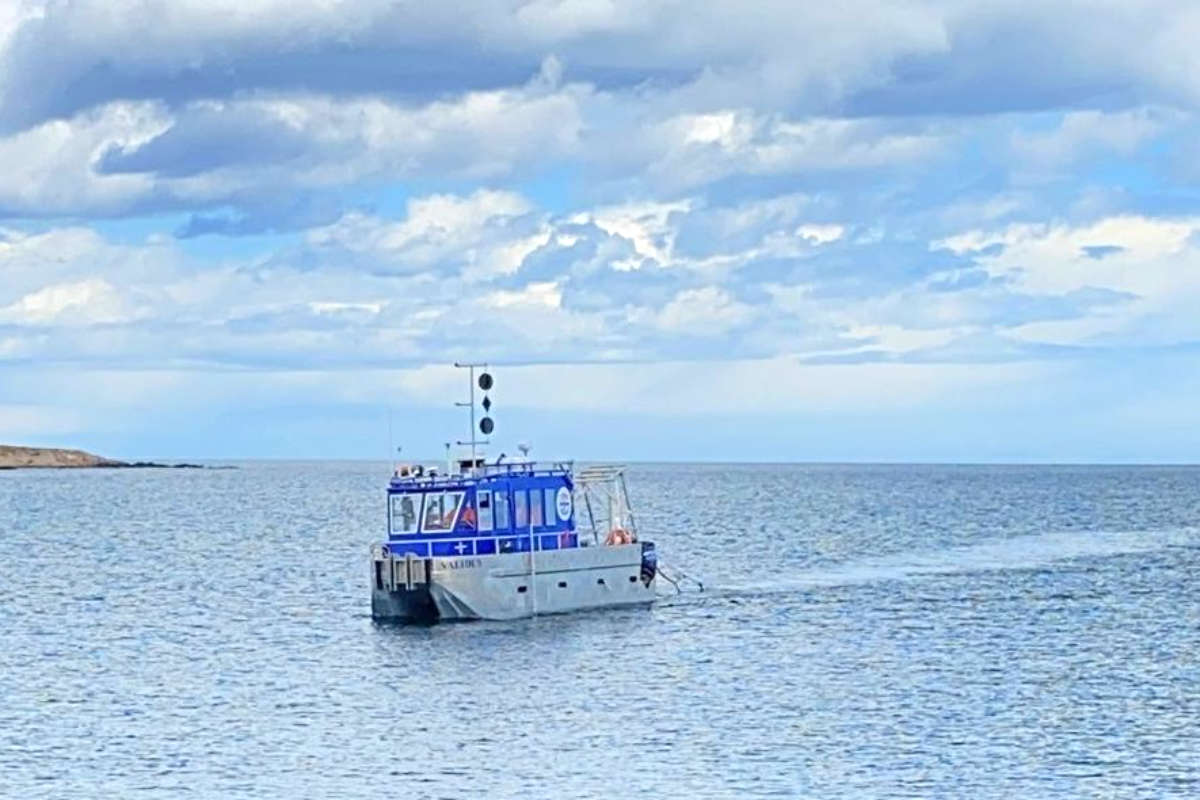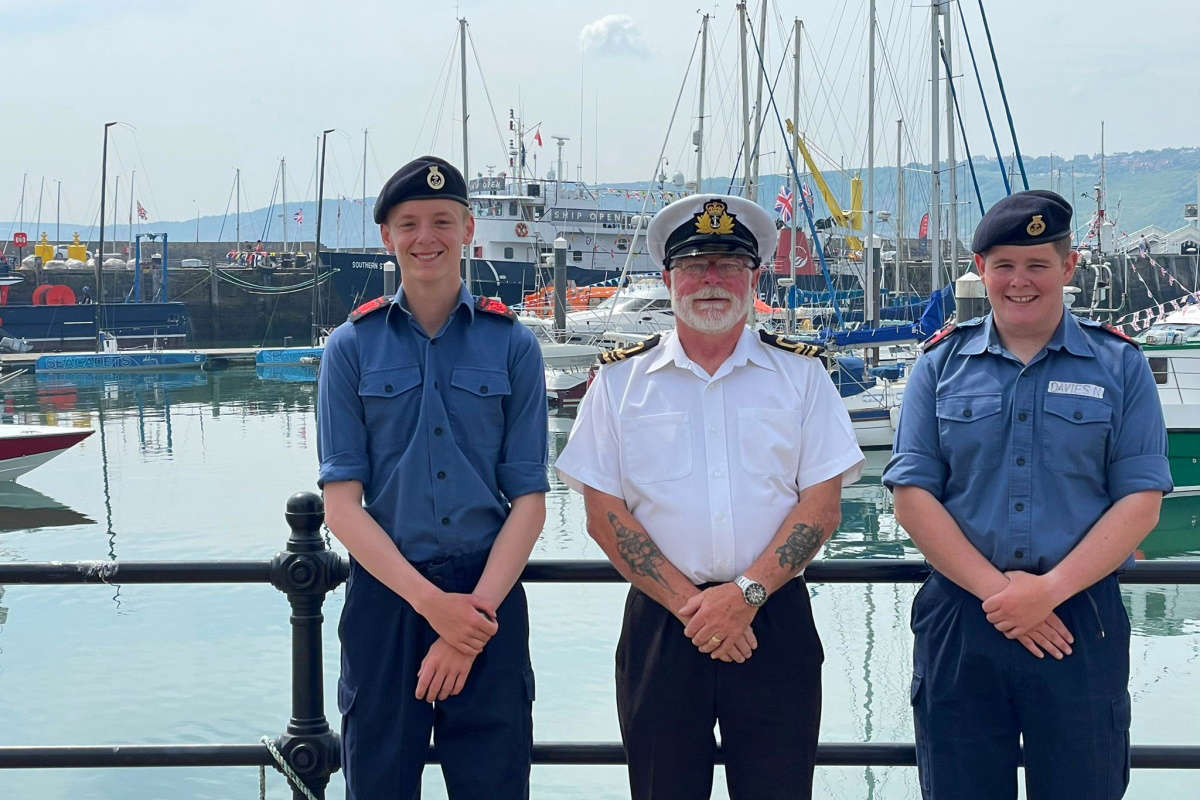
Marine surveys will be undertaken close to the shore around Bridlington and Fraisthorpe this summer as part of a new subsea electricity transmission link designed to transfer clean, home-grown energy between Scotland and England.
From mid-July a Jack-Up Barge will be located close to Fraisthorpe, East Riding of Yorkshire to begin a seabed survey for the project. The barge, which will be visible from the beach and coastal paths, is being used to gather data about the seabed conditions. Core samples of the seabed and subsurface will be taken, with some testing taking place in the barge’s on-board laboratory. This will help to inform the detailed design for the landfall - the area where the subsea cable link comes to shore.
During the survey works a crew transfer vessel will transport workers to and from the barge every 12 hours. The crew will operate the barge 24 hours a day for the duration of the surveys, where the barge will be lit during non-daylight hours for safety reasons. This survey work is expected to be completed in the summer, during which time we do not anticipate any disruption to beach users with full access maintained to the area’s beaches.
Further survey works includes the use of divers and remote operated vehicles searching the seabed for potential obstructions. These searches are expected to be completed in the autumn, but dates of the work may be subject to change owing to weather conditions and other factors.
During our work there is the possibility we will uncover material of potential archaeological interest, and we have an archaeologist in place for the duration of the works to assess any items of possible historical interest.
Jake Stevens, Cable Delivery Manager for National Grid and Eastern Green Link 2 (EGL2), said:
“We are working to ensure that any potential disruption is kept to a minimum. We’re ensuring both residents and visitors to the area will continue to enjoy full access to Fraisthorpe Beach and surrounding areas whilst our work takes place.
“The surveys will provide essential data about the seabed and seabed features, including potential archaeological items of interest, and help support detailed engineering leading to the safe and efficient installation of the EGL2 cables.
“We are working closely with our contractors throughout this operation to ensure it is planned and carried out in a safe manner and the local environment is protected.”
Simone Casali, Offshore Project Manager for Prysmian said:
“Collecting detailed information about the marine seabed at an early stage is crucial to ensuring the safe, timely and responsible installation of the subsea cable. At every step, our expert teams are committed to applying their specialist knowledge and working in close collaboration with partners to deliver EGL2 – a key milestone in the UK’s journey towards clean, secure energy.”
The Eastern Green Link 2 (EGL2) project, designed to run between Scotland and England, is a Joint Venture (JV) between National Grid Electricity Transmission and Scottish and Southern Energy Networks Transmission consisting of two new converter stations, one in the Drax area, North Yorkshire and one at Peterhead, Aberdeenshire.
It forms a vital part of The Great Grid Upgrade, with National Grid investing in upgrading and reinforcing the UK’s transmission network, accelerating the shift to a more affordable, secure and home-grown independent energy infrastructure.
EGL2 will scale up the UK’s capacity to transport home produced clean energy, predominantly from offshore wind, from where it is generated to where it is needed. By doing so it will increase the security, resilience, and stability of the UK’s transmission network, and will create an electricity superhighway capable of transporting enough electricity to power two million homes.
To connect these two sites, 69km of onshore underground cable and 436km of offshore high-voltage direct current (HVDC) subsea cable will be laid. The EGL2 cable will run from a landfall point in Scotland (Sandford Bay near Peterhead, Aberdeenshire) to a landfall point in England (Fraisthorpe Sands, East Yorkshire).
The precise offshore route will be finalised following the completion of surveys, and stakeholder consultation planned to take place between 2023 and 2027. The cable will be installed in 2028, with the project due to be operational in 2029.




 Five Figure Donation For New Scarborough Sea Cadets Vessel
Five Figure Donation For New Scarborough Sea Cadets Vessel
 Scarborough Athletic Go To Cheshire Looking To Reignite Promotion Push
Scarborough Athletic Go To Cheshire Looking To Reignite Promotion Push
 Review For Scarborough Pride Parking Charges
Review For Scarborough Pride Parking Charges
 Whitby Town Trip Postponed
Whitby Town Trip Postponed
 Bridlington Town Battle Blyth Spartans
Bridlington Town Battle Blyth Spartans
 Yorkshire Coast Rugby Action
Yorkshire Coast Rugby Action
 Pickering Town Target End To Barren Run
Pickering Town Target End To Barren Run
 Scarborough Sparkle Returns This Weekend
Scarborough Sparkle Returns This Weekend
 New Partnership Sees Foodbank Donation Stations at East Riding Council Buildings
New Partnership Sees Foodbank Donation Stations at East Riding Council Buildings
 Bus Franchising Pilot Coming to North Yorkshire Coast
Bus Franchising Pilot Coming to North Yorkshire Coast
 Scarborough's Rainbow Centre Finds Hidden Room
Scarborough's Rainbow Centre Finds Hidden Room
 Scarborough MP "Saddened" as Bingo Hall Closes
Scarborough MP "Saddened" as Bingo Hall Closes









Comments
Add a comment